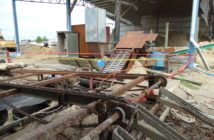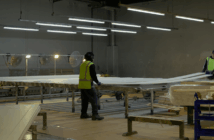Two recent incidents involving remote control unit failure in mining and quarrying operations have caused WorkSafe concern

There was no harm caused in either occasion but the potential is high for injuries should recommended steps below not be followed.
The first incident involved workers at a quarry creening and crushing aggregate using a tracked screening plant and secondary mobile cone plant.
It was nearing the end of the day when the screening plant screwed around on its tracks making contact with the secondary cone.
The operator thought that he had accidentally activated the remote control unit.
The plant was moved to another location where it screwed on its tracks for a second time.
Because the remote was controlled by a different operator, workers realised that there must be a fault with the remote.
The plant was then shut down and isolated to prevent further unintended movement.
The following factors were reported by staff:
- The machine had been working all day.
- The machine remote was flat that morning.
- Thunderstorms were reported for previous days.
- There were different staff members for both occasions of the malfunction.
- Both staff saw the plant operational light flash when unwanted tracking occurred.
Investigation results
The supplier and servicing agent were contacted and an assessment of the machine was carried out.
The issue was identified as an electrical failure of the remote due to water getting into it.
Small tears in the overlay of the remote are the likely cause of the ingress.
The remote was IP66 rated to prevent ingress of dust and water, when the remote is maintained in good condition.
All other components on the plant were in good condition.
The second incident resulted from live maintenance testing on a continuous miner machine (CM01) in the mechanical workshop.
At the same time, an operator was taking a remote from a charging station for a different continuous miner (CM03) in preparation to be taken underground for use.
The office where the charging station is located is approximately 250 m from the workshop.
While the operator was fiddling with the CM03 controls in the office, the CM01 in the workshop started to operate.
Investigation results
The remotes were found to be operating on the same frequency.
Following the incident, the two machines were put on different frequencies and a charging procedure was developed.
Key learnings and recommendations:
- perform a risk assessment of electrical equipment such as remotes used on site to ascertain and plan for what can go wrong
- identify no-go zones through a robust risk assessment process, communicate these to the workforce, including when the equipment is operated via remote control
- check all electrical equipment regularly, tagging out any defective equipment either replacing it or sending for repair
- ensure each asset operated by remote control operates on different frequencies to prevent interference
- visually check all remotes for damage regularly, and send for full assessment by a competent person on a six-monthly basis, or as reasonably practicable
- store all remotes not in use in sealed, clear, protective containers to prevent damage and ingress of dust or water
- develop a remote charging procedure
- where possible install an isolation switch on plant to prevent movement unless switch is engaged
- if multiple on-site assets use remote controls, label remotes against the respective assets they are intended to be operated with
- hold regular toolbox meetings with workers to discuss safety issues and highlight importance of treating remotes as a sensitive device
- the remote control should be submitted to the effect of impact test in accordance with the appropriate standard such as AS/NZS 4240.1: Remote control systems for mining equipment – Design, construction, testing, installation and commissioning.
The remote control should be capable of withstanding a free vertical fall of one metre onto a rigid surface without causing hazardous motion, inadvertent starting or rendered stop control inoperable.
The remote control should incorporate a remote shutdown device that is both accessible and prominent for use in emergency to ensure a safe stopping in the event of a malfunction.
Actuating controls should be suitably shrouded or otherwise designed so that likelihood of them being operated unintentionally is minimised to as low as possible.
All controls should be a deadman control type.
External interference, such as electromagnetic, to the remote control should not cause a dangerous condition.



